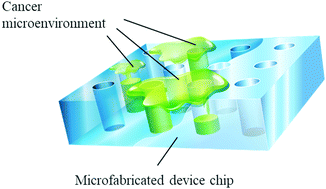Cancer diagnosis and analysis devices based on multimolecular crowding
Abstract
The study of the multimolecular crowding around cancer cells has opened up the possibility of developing new devices for cancer diagnosis and analysis through the measurement of intercellular communication related to cell proliferation and invasive metastasis associated with cancer malignancy. In particular, cells and extracellular vesicles that flow into the bloodstream contain metabolites and secreted products of the cancer microenvironment. These are positioned as targets for the development of new devices for the understanding and application of multimolecular crowding around cancer cells. Examples include the separation analysis of cancer cells in blood for the next generation of less invasive testing techniques, and mapping analysis using Raman scattering to detect cancer cells without staining. Another example is the evaluation of the relationship between exosomes and cancer traits for the exploration of new anti-cancer drugs, and the commercialization of exosome separation devices for ultra-early cancer diagnosis. The development of nanobiodevice engineering, which applies multimolecular crowding to conventional nanobioscience, is expected to contribute to the diagnosis and analysis of various diseases in the future.

- This article is part of the themed collection: Multimolecular Crowding in Biosystems


 Please wait while we load your content...
Please wait while we load your content...